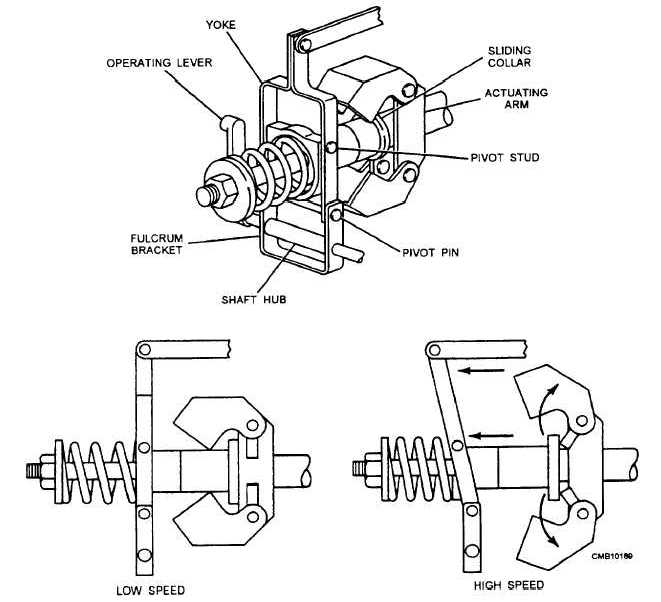In mechanical centrifugal flyweight governors (fig. 5-6), two forces oppose each other. One of these forces is tension spring (or springs) which may be varied either by an adjusting device or by movement of the manual throttle. The engine produces the other force. Weights, attached to the governor drive shaft, are rotated, and a centrifugal force is created when the engine drives the shaft. The centrifugal force varies with the speed of the engine.
Transmitted to the fuel system through a connecting linkage, the tension of the spring (or springs) tends to increase the amount of fuel delivered to the cylinders. On the other hand, the centrifugal force of the rotating weights, through connecting linkage, tends to reduce the quantity of fuel injected. When the two opposing forces are equal, or balanced, the speed of the engine remains constant
To show how the governor works when the load increases and decreases, let us assume you are driving a truck in hilly terrain. When a truck approaches a hill at a steady engine speed, the vehicle is moving from a set state of balance in the governor assembly (weights and springs are equal) with a fixed throttle setting to an unstable condition. As the vehicle starts to move up the hill at a fixed speed, the increased load demands result in a reduction in engine speed. This upsets the state of balance that had existed in the governor. The reduced rotational speed at the engine results in a reduction in speed, and, therefore, the centrifugal force of the governor weights. When the state of balance is upset, the high-speed governor spring is allowed to expand,

Figure 5-6. - Mechanical (centrifugal) governor.
Continue Reading